25 july 2019
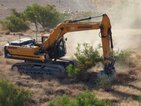
Israeli forces invaded Khirbet Umm al-Khair in Masafer Yatta, near Hebron in the southern West Bank Thursday, and destroyed dozens of olive trees, water irrigation systems and four water wells used by Palestinian Bedouin farmers. tweet
This comes two weeks after Israeli forces invaded the same village and destroyed a children’s park, nine water wells and uprooted a forest of trees in Umm al-Khair’s nature reserve area under the pretext that the area is now an Israeli military training zone.
Rateb Jabour, coordinator of the national and popular committees in the south of the West Bank, told the Palestinian Wafa News Agency that the residents of Umm al-Khair and area villages, who are mainly herders, depend on the water for irrigating their land and for their cattle.
Jabour stressed that Israel is trying to displace these residents as a precursor to taking over their land.
The village of Umm al-Khair is located on land that Israeli authorities are attempting to annex into the settlement of Carmel, which was constructed on stolen village land.
Nicholas Kristof of The New York Times wrote in 2010 that Carmel is “a lovely green oasis that looks like an American suburb. It has lush gardens, kids riding bikes and air-conditioned homes. It also has a gleaming, electrified poultry barn that it runs as a business.
Beyond its barbed wire fencing, the Bedouins of Umm al-Kheir in shanties are denied connection to the electricity grid, barns for their livestock and toilets, and all attempts to build permanent dwellings are demolished.
Elad Orian, an Israeli human rights activist, noted that the chickens of Carmel’s poultry farm get more electricity and water than the Palestinian Bedouin nearby.”
Awda Mohammad, a resident of the village, wrote in a 2017 article for the Israeli leftist +972Mag entitled, My village is under threat. I’m not giving up hope, “I believe, like my father did, that we have the right to live without the constant threat of demolition, to have enough clean water, to have good houses that we can live in during all seasons, to have a community center for our children, and for all of us to continue learning and growing, to live without fear, and to do what we want as autonomous humans.”
Umm al-Khair is home to around 70 Palestinian Bedouins who have faced multiple demolitions of their homes by Israeli forces.
This comes two weeks after Israeli forces invaded the same village and destroyed a children’s park, nine water wells and uprooted a forest of trees in Umm al-Khair’s nature reserve area under the pretext that the area is now an Israeli military training zone.
Rateb Jabour, coordinator of the national and popular committees in the south of the West Bank, told the Palestinian Wafa News Agency that the residents of Umm al-Khair and area villages, who are mainly herders, depend on the water for irrigating their land and for their cattle.
Jabour stressed that Israel is trying to displace these residents as a precursor to taking over their land.
The village of Umm al-Khair is located on land that Israeli authorities are attempting to annex into the settlement of Carmel, which was constructed on stolen village land.
Nicholas Kristof of The New York Times wrote in 2010 that Carmel is “a lovely green oasis that looks like an American suburb. It has lush gardens, kids riding bikes and air-conditioned homes. It also has a gleaming, electrified poultry barn that it runs as a business.
Beyond its barbed wire fencing, the Bedouins of Umm al-Kheir in shanties are denied connection to the electricity grid, barns for their livestock and toilets, and all attempts to build permanent dwellings are demolished.
Elad Orian, an Israeli human rights activist, noted that the chickens of Carmel’s poultry farm get more electricity and water than the Palestinian Bedouin nearby.”
Awda Mohammad, a resident of the village, wrote in a 2017 article for the Israeli leftist +972Mag entitled, My village is under threat. I’m not giving up hope, “I believe, like my father did, that we have the right to live without the constant threat of demolition, to have enough clean water, to have good houses that we can live in during all seasons, to have a community center for our children, and for all of us to continue learning and growing, to live without fear, and to do what we want as autonomous humans.”
Umm al-Khair is home to around 70 Palestinian Bedouins who have faced multiple demolitions of their homes by Israeli forces.
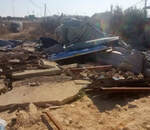
Israeli soldiers demolished, on Thursday morning, several commercial structures in Hares village, west of Salfit, in central West Bank.
The soldiers, accompanied by military bulldozers, invaded the village and demolished a car wash facility and a carpentry workshop, in addition to destroying a 200 square/meter recently constructed concrete foundation, owned by Nadi Hasan Suleiman.
The army said that it demolished the structures because there “were not licensed” by the Civil Administration office, the administrative branch of Israel’s illegal military occupation in the West Bank, especially since they are in Area C of the West Bank, under full Israeli control.
Last year, Israel demolished several commercial structures, owned by Suleiman’s brothers, under the same allegations.
The soldiers, accompanied by military bulldozers, invaded the village and demolished a car wash facility and a carpentry workshop, in addition to destroying a 200 square/meter recently constructed concrete foundation, owned by Nadi Hasan Suleiman.
The army said that it demolished the structures because there “were not licensed” by the Civil Administration office, the administrative branch of Israel’s illegal military occupation in the West Bank, especially since they are in Area C of the West Bank, under full Israeli control.
Last year, Israel demolished several commercial structures, owned by Suleiman’s brothers, under the same allegations.
24 july 2019
|
|
The Palestinian township of Ar’ara, located on the Israeli side of the Green Line (1967 Armistice Line), and an area targeted for Israeli colonial expansion, on Wednesday became the latest site of Israeli destruction of Palestinian homes.
Early Wednesday morning, Israeli forces invaded the village of Khor Saqr, located in the Ar’ara township in the northern part of Israel, in the ‘Triangle’ region near Umm al-Fahm. The soldiers brought with them armored vehicles and Caterpillar-brand armored D9 bulldozers, which they used to destroy the family home of Ibrahim Marzouk. Marzouk had been issued a demolition order by Israeli forces just days earlier. |
According to local sources, the Israeli military forces invaded the area with Israeli police and special units, as well as numerous armored vehicles.
During the invasion of the village, they were confronted by local village youth, who threw stones at the soldiers and shouted at them to leave their town.
The Israeli soldiers abducted three youth and wounded several others during the confrontation.
Numerous Palestinian homeowners in the neighborhood of Khor Saqr have recently received demolition notices over the past year – totaling more than 50 homes and shops.
The demolition notices are part of an overall Israeli plan to displace Palestinians from their ancestral homes in Ar’ara and Ara townships, located in what is now Israel, and force the residents into the already-crowded West Bank – thus creating more internally displaced refugees in an area that already houses one of the largest refugee populations on earth.
In 2017, columnist Ali Abunimah wrote about Netanyahu’s ‘Prawer Plan’, which would force the transfer of Palestinians with Israeli citizenship into the West Bank. The Palestinian residents of the Ar’ara township are among those targeted by the Israeli government for forced relocation.
“Netanyahu’s plan would take Palestinians in Israel, who currently possess rights as citizens – albeit limited by law and inferior to Jews – and move them to a situation where like the rest of the Palestinians under perpetual Israeli military occupation they would have no rights at all”, wrote Abunimah.
During the invasion of the village, they were confronted by local village youth, who threw stones at the soldiers and shouted at them to leave their town.
The Israeli soldiers abducted three youth and wounded several others during the confrontation.
Numerous Palestinian homeowners in the neighborhood of Khor Saqr have recently received demolition notices over the past year – totaling more than 50 homes and shops.
The demolition notices are part of an overall Israeli plan to displace Palestinians from their ancestral homes in Ar’ara and Ara townships, located in what is now Israel, and force the residents into the already-crowded West Bank – thus creating more internally displaced refugees in an area that already houses one of the largest refugee populations on earth.
In 2017, columnist Ali Abunimah wrote about Netanyahu’s ‘Prawer Plan’, which would force the transfer of Palestinians with Israeli citizenship into the West Bank. The Palestinian residents of the Ar’ara township are among those targeted by the Israeli government for forced relocation.
“Netanyahu’s plan would take Palestinians in Israel, who currently possess rights as citizens – albeit limited by law and inferior to Jews – and move them to a situation where like the rest of the Palestinians under perpetual Israeli military occupation they would have no rights at all”, wrote Abunimah.
23 july 2019
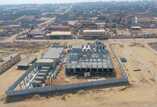
The head of the Water Authority, Mazen Ghoneim, announced today the completion of the sea water desalination plant project in Gaza City.
Ghoneim said in a press release that the experimental operation of the station, which has a capacity of producing 10,000 cubic meters per day, will serve more than 200,000 citizens living in Gaza and northern Gaza districts.
He said the water from this station will be mixed with the water reservoirs constructed by the Water Authority.
He pointed out that work is underway to connect the station to the electricity network to ensure continuity and stability of its work in order to move to permanent operation expected to be in less than three months.
He thanked the sponsors of this project, which cost $15 million funded by the Kuwaiti Fund through the Islamic Development Bank in cooperation with the Coastal Municipality Water Utility.
Ghoneim stressed that the project was completed after three years during which the Water Authority was able to overcome all the challenges, especially Israel’s refusal to allow the entry of materials necessary for electromechanical equipment.
The Gaza water desalination plant is the second station to be completed in 2019 after the Deir al-Balah station in accordance with the Water Authority's plan to supply the two million residents of the Gaza Strip with safe drinking water, develop water services and stop the deterioration in the underground water reservoir.
Meanwhile, Ghoneim signed today in Ramallah a memorandum of understanding with the head of Department for International Development (DFID) office in Palestine Colleen Wainwright to support the construction of central desalination plant in the Gaza Strip at a cost of 9 million Sterling pounds.
Prime Minister Mohammad Shtayyeh said the plant is very important for the Gaza Strip to relieve its residents from their suffering since the water situation in Gaza has reached a very critical stage.
Ghoneim said in a press release that the experimental operation of the station, which has a capacity of producing 10,000 cubic meters per day, will serve more than 200,000 citizens living in Gaza and northern Gaza districts.
He said the water from this station will be mixed with the water reservoirs constructed by the Water Authority.
He pointed out that work is underway to connect the station to the electricity network to ensure continuity and stability of its work in order to move to permanent operation expected to be in less than three months.
He thanked the sponsors of this project, which cost $15 million funded by the Kuwaiti Fund through the Islamic Development Bank in cooperation with the Coastal Municipality Water Utility.
Ghoneim stressed that the project was completed after three years during which the Water Authority was able to overcome all the challenges, especially Israel’s refusal to allow the entry of materials necessary for electromechanical equipment.
The Gaza water desalination plant is the second station to be completed in 2019 after the Deir al-Balah station in accordance with the Water Authority's plan to supply the two million residents of the Gaza Strip with safe drinking water, develop water services and stop the deterioration in the underground water reservoir.
Meanwhile, Ghoneim signed today in Ramallah a memorandum of understanding with the head of Department for International Development (DFID) office in Palestine Colleen Wainwright to support the construction of central desalination plant in the Gaza Strip at a cost of 9 million Sterling pounds.
Prime Minister Mohammad Shtayyeh said the plant is very important for the Gaza Strip to relieve its residents from their suffering since the water situation in Gaza has reached a very critical stage.
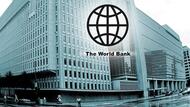
The World Bank granted $5 million to improve access to registered land and property-related services for Palestinians.
The new Real Estate Registration Project will also benefit from additional grants from multi-donor trust funds in the amounts of $4.6 million from the Global Partnership for Results Based Approaches and $3 million from the Palestinian Partnership for Infrastructure Development.
“Land registration systems are essential to enhance land tenure security and property rights which are fundamental for a well-functioning economy. The new project will contribute to the development of the Palestinian real estate markets, business development in a number of sectors including construction, housing, and agriculture, and increase access to finance through land collateral,” said Kanthan Shankar, World Bank Country Director for West Bank and Gaza.
“This new engagement will offer investment opportunities that will stimulate job creation and generate revenues for the Palestinian Authority.”
To date, only thirty-eight percent of land in the West Bank is registered, with a significant portion of unregistered properties remaining in the urban centers. The ed access to registered land and real estate in the Palestinian territories remains one of the largest impediments to economic growth. A 2018 World Bank study conservatively estimated that the collateral value of unregistered land in areas under Palestinian control ranges between $7 to $35 billion.
The $12.6 million project aims to reform the real estate market in the West Bank, contribute to the development of the mortgage market, and create space for increased private sector activity. The project will directly support the Palestinian Authority’s ongoing efforts to register properties and automate real estate related services.
“Open and transparent access to land and real estate to protect women and vulnerable groups will be central to the project. The project will specifically target women in the registration process to increase awareness of their property rights as well as produce gender disaggregated data for monitoring.
Not only it will have direct impact on the tenure security of Palestinian women, but it will create additional potential sources of income and economic opportunities,” said Rafeef Abdelrazek, World Bank Urban Development Specialist.
The new Real Estate Registration Project will also benefit from additional grants from multi-donor trust funds in the amounts of $4.6 million from the Global Partnership for Results Based Approaches and $3 million from the Palestinian Partnership for Infrastructure Development.
“Land registration systems are essential to enhance land tenure security and property rights which are fundamental for a well-functioning economy. The new project will contribute to the development of the Palestinian real estate markets, business development in a number of sectors including construction, housing, and agriculture, and increase access to finance through land collateral,” said Kanthan Shankar, World Bank Country Director for West Bank and Gaza.
“This new engagement will offer investment opportunities that will stimulate job creation and generate revenues for the Palestinian Authority.”
To date, only thirty-eight percent of land in the West Bank is registered, with a significant portion of unregistered properties remaining in the urban centers. The ed access to registered land and real estate in the Palestinian territories remains one of the largest impediments to economic growth. A 2018 World Bank study conservatively estimated that the collateral value of unregistered land in areas under Palestinian control ranges between $7 to $35 billion.
The $12.6 million project aims to reform the real estate market in the West Bank, contribute to the development of the mortgage market, and create space for increased private sector activity. The project will directly support the Palestinian Authority’s ongoing efforts to register properties and automate real estate related services.
“Open and transparent access to land and real estate to protect women and vulnerable groups will be central to the project. The project will specifically target women in the registration process to increase awareness of their property rights as well as produce gender disaggregated data for monitoring.
Not only it will have direct impact on the tenure security of Palestinian women, but it will create additional potential sources of income and economic opportunities,” said Rafeef Abdelrazek, World Bank Urban Development Specialist.
22 july 2019
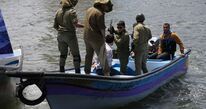
The Israeli occupation navy on Monday night kidnaped two Palestinian fishermen and confiscated their boat off the southern coast of the Gaza Strip.
According to the fishermen committees, the fishermen were kidnaped from aboard their boat off the shore of Rafah, south of Gaza. They were identified as Isam al-Aqra, 24, and his brother Riyad, 20.
Israeli gunboats are around Gaza fishermen almost every day, harassing them, shooting at them, damaging their boats, and making arrests. Sometimes fishermen are injured or killed during gunfire attacks.
According to the fishermen committees, the fishermen were kidnaped from aboard their boat off the shore of Rafah, south of Gaza. They were identified as Isam al-Aqra, 24, and his brother Riyad, 20.
Israeli gunboats are around Gaza fishermen almost every day, harassing them, shooting at them, damaging their boats, and making arrests. Sometimes fishermen are injured or killed during gunfire attacks.
21 july 2019
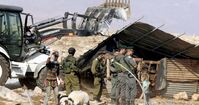
The Israeli occupation forces (IOF) on Sunday morning demolished several agricultural structures and confiscated residential tents in the Bedouin area of al-Hadidiya in the northern Jordan Valley.
Local official Mu’taz Bisharat said that the IOF razed agricultural structures belonging to a local resident called Najeh Ka’abneh and seized tents belonging to two families from the same area.
Bisharat added that the IOF intends to carry out more demolitions and tent removals in al-Hadidiya area.
Local official Mu’taz Bisharat said that the IOF razed agricultural structures belonging to a local resident called Najeh Ka’abneh and seized tents belonging to two families from the same area.
Bisharat added that the IOF intends to carry out more demolitions and tent removals in al-Hadidiya area.
18 july 2019
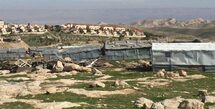
Israeli Occupation Forces (IOF) seized a caravan and closed agricultural land in the northern town of Asira, west of Nablus, on Thursday.
The head of the municipality of Asira told the PNN that IOF confiscated the caravan, which belongs to a citizen from the city of Nablus, after unloading the contents.
The owner placed it in his farmland about two months ago.
The head of the municipality of Asira told the PNN that IOF confiscated the caravan, which belongs to a citizen from the city of Nablus, after unloading the contents.
The owner placed it in his farmland about two months ago.

Israeli Occupation Forces on Thursday seized tents and solar panels in the town of Nahalin, west of Bethlehem.
According to Hani Fonoun, the Deputy Mayor of Nahalin, the IOF stormed the area of Ein Fares and destroyed five tents used as pens for livestock breeding as well as addition to solar cells.
He stressed that these measures fall within the scheme of settlement expansion to seize the territory of Ain Fares, which is considered the agricultural center of the town.
According to Hani Fonoun, the Deputy Mayor of Nahalin, the IOF stormed the area of Ein Fares and destroyed five tents used as pens for livestock breeding as well as addition to solar cells.
He stressed that these measures fall within the scheme of settlement expansion to seize the territory of Ain Fares, which is considered the agricultural center of the town.
17 july 2019

Israeli bulldozers demolished on Wednesday morning a laundry facility belonging to the family of Wadah Abu Dayya in the town of al-Jib, northwest of occupied Jerusalem.
Israeli Occupation Forces bulldozed the area in the Al-Khalayleh neighborhood of the town and prevented residents from reaching it.
They razed a 60-square-meter laundry area, a 20-meter area of land and a house owned by a Palestinian man, Yousef Hussein Abu Dayya, on the pretext of not having a licence.
Israeli Occupation Forces bulldozed the area in the Al-Khalayleh neighborhood of the town and prevented residents from reaching it.
They razed a 60-square-meter laundry area, a 20-meter area of land and a house owned by a Palestinian man, Yousef Hussein Abu Dayya, on the pretext of not having a licence.

The Israeli occupation forces on Wednesday demolished four Palestinian shops in Silwan town in Jerusalem.
Local residents said that the Israeli forces, accompanied by several bulldozers, stormed Ain al-Louzeh neighborhood and knocked down four stores owned by the Palestinian citizen Mohammed al-Abbasi. video video video
The Israeli forces further assaulted the Palestinian youths who rushed to the scene and protested the arbitrary demolition. video
The Israeli forces informed al-Abbasi that his four stores are "unlicensed" on Tuesday and ordered him to take his goods out.
Local residents said that the Israeli forces, accompanied by several bulldozers, stormed Ain al-Louzeh neighborhood and knocked down four stores owned by the Palestinian citizen Mohammed al-Abbasi. video video video
The Israeli forces further assaulted the Palestinian youths who rushed to the scene and protested the arbitrary demolition. video
The Israeli forces informed al-Abbasi that his four stores are "unlicensed" on Tuesday and ordered him to take his goods out.
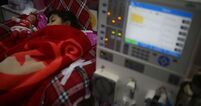
The Palestinian health ministry has said that the hospitals in the Gaza Strip suffer from an acute shortage of medicines and essential medical consumables, describing it as “the most difficult crisis during the years of the Israeli blockade.”
Spokesman for the health ministry Ashraf al-Qudra stated on Tuesday that the ministry’s annual needs of medical supplies are worth $40 million, but it received during the first half of the current year only a $10 million worth of medicines and medical consumables from different parties.
Qudra added that the failure to meet the needs of patients deprived 50 percent of them of receiving medical treatment.
He urged the concerned parties and donors to urgently provide Gaza with its needs of medical supplies.
Spokesman for the health ministry Ashraf al-Qudra stated on Tuesday that the ministry’s annual needs of medical supplies are worth $40 million, but it received during the first half of the current year only a $10 million worth of medicines and medical consumables from different parties.
Qudra added that the failure to meet the needs of patients deprived 50 percent of them of receiving medical treatment.
He urged the concerned parties and donors to urgently provide Gaza with its needs of medical supplies.
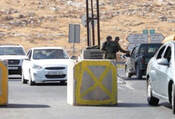
Palestinians lose about 60 million hours of work per year, due to check points and restrictions imposed, by the Israeli occupation, on Palestinian movement between the towns and villages of the West Bank, the Applied Research Institute (ARIJ) reported Monday, according to Al Ray.
ARIJ estimated the loss at about $ 270 million per year, according to the wage of workers per hour, in addition to extra fuel consumption at about 80 million liters per year, estimated at $ 135 million.
The consumption of the vehicle, which runs at a very low speed for long periods (1 – 10 km / h), according to certain calibrations, is about 0.049 liters / minute and 0.035 liters / minute for diesel engines and gasoline, according to the Institute.
The consumption of this amount of fuel leads to an increase in carbon dioxide emissions, by about 196 thousand tons per year.
According to some scientific studies, the consumption of one liter of fuel leads to the emission of 2.4 kg of carbon dioxide.
The study includes monitoring and documenting the movement of Palestinians at 15 major Israeli military checkpoints between the cities of the West Bank and 11 checkpoints which have restricted the movement of Palestinians through Jerusalem and the occupied territories since 1948.
The study used GPS technology to monitor and document the movements at the checkpoints.
He pointed out that 70 GPS tracking devices were installed on Palestinian vehicles (public transport vehicles, buses, commercial transport, in addition to private vehicles). These vehicles were chosen according to their daily route and movement between the Palestinian cities.
Each tracking device monitors the location, time and speed of the vehicle every 10 seconds, which allowed to calculate the time spent by the vehicle at the military checkpoint accurately.
It noted that it collected data from the beginning of January to the end of July 2018, and during this period it collected more than 18 million readings of tracking devices.
The fieldwork team conducted a traffic count at the checkpoints, where all vehicles passing through these checkpoints were registered within one day from 6 am to 6 pm.
It also used the questioner at the checkpoints separating the West Bank cities from Jerusalem and the occupied territories of 1948, in order to know the time spent by the Palestinian worker at these barriers.
It pointed out that a questionnaire was prepared and a random sample (600 questionnaires) were distributed to 11 barriers used by workers.
ARIJ estimated the loss at about $ 270 million per year, according to the wage of workers per hour, in addition to extra fuel consumption at about 80 million liters per year, estimated at $ 135 million.
The consumption of the vehicle, which runs at a very low speed for long periods (1 – 10 km / h), according to certain calibrations, is about 0.049 liters / minute and 0.035 liters / minute for diesel engines and gasoline, according to the Institute.
The consumption of this amount of fuel leads to an increase in carbon dioxide emissions, by about 196 thousand tons per year.
According to some scientific studies, the consumption of one liter of fuel leads to the emission of 2.4 kg of carbon dioxide.
The study includes monitoring and documenting the movement of Palestinians at 15 major Israeli military checkpoints between the cities of the West Bank and 11 checkpoints which have restricted the movement of Palestinians through Jerusalem and the occupied territories since 1948.
The study used GPS technology to monitor and document the movements at the checkpoints.
He pointed out that 70 GPS tracking devices were installed on Palestinian vehicles (public transport vehicles, buses, commercial transport, in addition to private vehicles). These vehicles were chosen according to their daily route and movement between the Palestinian cities.
Each tracking device monitors the location, time and speed of the vehicle every 10 seconds, which allowed to calculate the time spent by the vehicle at the military checkpoint accurately.
It noted that it collected data from the beginning of January to the end of July 2018, and during this period it collected more than 18 million readings of tracking devices.
The fieldwork team conducted a traffic count at the checkpoints, where all vehicles passing through these checkpoints were registered within one day from 6 am to 6 pm.
It also used the questioner at the checkpoints separating the West Bank cities from Jerusalem and the occupied territories of 1948, in order to know the time spent by the Palestinian worker at these barriers.
It pointed out that a questionnaire was prepared and a random sample (600 questionnaires) were distributed to 11 barriers used by workers.
Page: 29 - 28 - 27 - 26 - 25 - 24 - 23 - 22 - 21 - 20 - 19 - 18 - 17 - 16 - 15 - 14 - 13 - 12 - 11 - 10 - 9 - 8
